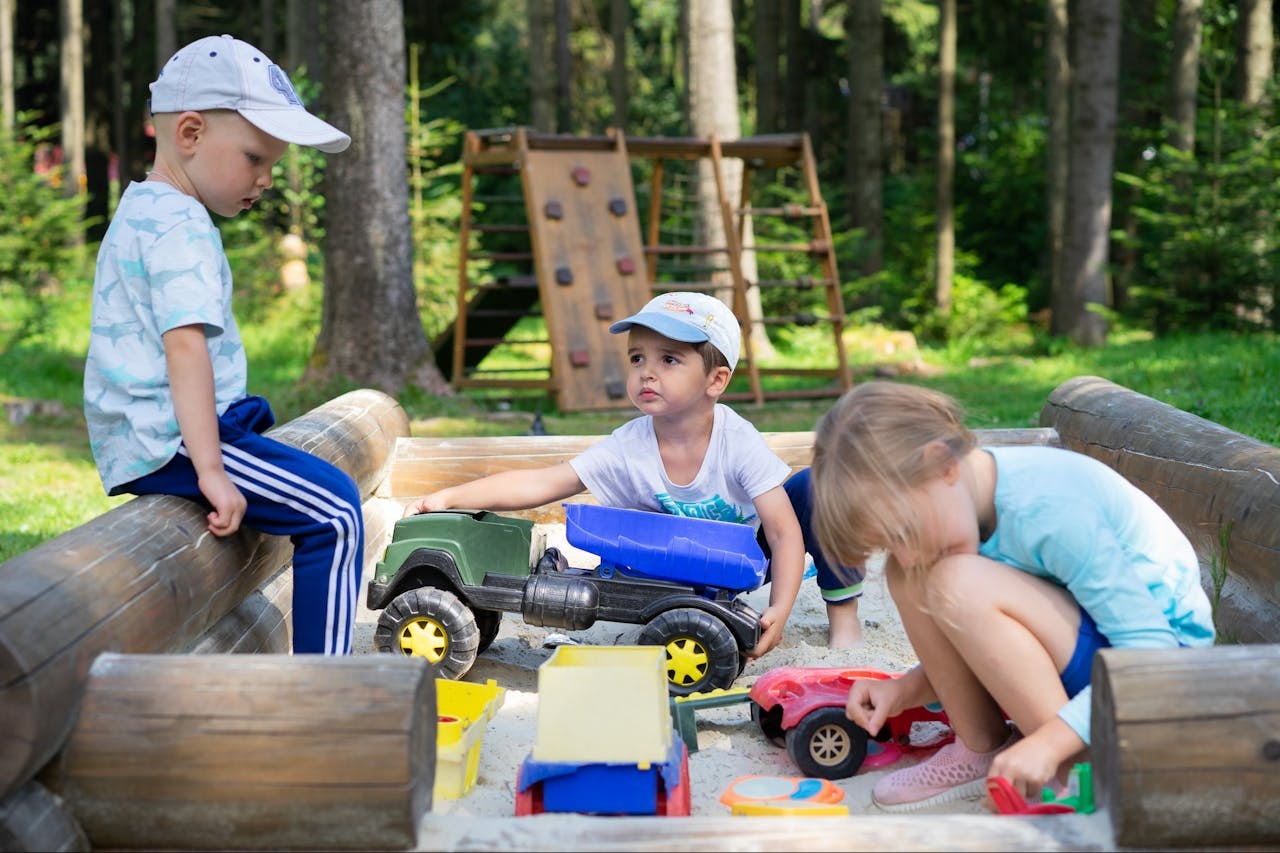How Play Therapy Helps Heal Trauma in Children

Play therapy is a therapeutic approach designed to help children navigate through trauma. Using toys, drawings, video games, etc., this method allows children to express complex feelings in a safe, controlled environment. For children aged 3 to 12, play therapy serves as a bridge to communicate what words often can’t express. It’s adaptable, even extending its benefits to older children or adults with cognitive impairments.
Research consistently highlights the power of play therapy in healing trauma. One significant advantage is the reduction in trauma symptoms. Children often see a marked decrease in PTSD, anxiety, and depression. Moreover, play therapy enhances emotional and behavioral regulation, helping kids develop better control over their emotions and behaviors. This, in turn, leads to improved social skills, effective communication, empathy, and the ability to build healthier relationships. Through play, children find new ways to cope and connect, paving the path towards healing.
The Role of Play Therapy in Healing Childhood Trauma
Children who have experienced trauma may find it challenging to articulate their feelings or connect with others. Play therapy provides them with a way to explore their inner world. By choosing their favorite toys and activities, kids enter a safe space where they feel empowered and in control. This freedom allows them to express emotions and thoughts that they might struggle to articulate otherwise. Through play, they can navigate complex feelings and experiences, leading to a better understanding of themselves and forming healthier connections with family, friends, and educators.
Symbolism and Safe Spaces
In play therapy, toys become more than just objects. They transform into symbols that represent a child’s inner experiences. For instance, a child might use action figures to depict a scenario they’re unable to discuss directly. This symbolic play can be incredibly powerful, allowing children to process what’s happening in their lives. The therapist observes these interactions, providing a safe environment where children can be their authentic selves. Here, they can test out new roles, reveal genuine feelings, and begin healing from trauma in a space that’s both comforting and non-judgmental.
Common Play Therapy Techniques for Trauma
Here are some typical techniques used in play therapy.
Therapeutic Play
Imagine a world where toys become the language through which children express themselves. Therapeutic play utilizes toys and play activities to create a safe space to explore feelings, experiences, and concerns. Through this process, they can communicate emotions without the pressure of words. Whether it’s dolls, action figures, or building blocks, play becomes a medium for healing and understanding.
Sand Tray Therapy
In sand tray therapy, children create miniature worlds using sand and an array of figures. This technique allows them to manifest their internal thoughts and feelings in a tangible way. By arranging these figures in the sand, children illustrate their experiences and, in doing so, begin to process their emotions and trauma.
Art Therapy
Art therapy offers a non-verbal pathway to express emotions. Through drawing, painting, or sculpting, children find a safe outlet for their feelings. This creative outlet helps process traumatic experiences, providing clarity and resolution where words might fail.
Drama Therapy and Role-Playing
Drama therapy invites children to act out scenarios using puppets or dolls. By taking on different roles, children can explore relationship dynamics and practice new behaviors. This role-playing provides fresh perspectives on their trauma and encourages emotional healing.
Therapeutic Storytelling
Stories have the power to heal. In therapeutic storytelling, children either create or listen to narratives filled with relatable characters and situations. These stories help them identify with their own challenges and emotions, offering insights and pathways to manage them.
By incorporating these diverse techniques, play therapy adapts to each child’s unique needs, fostering a gentle yet profound journey towards healing and recovery.
If you’re considering therapy, think about what play therapy can bring to the table. Think of a gentle exploration through creative play that not only helps children process their trauma but also empowers them to develop coping strategies and resilience. Contact us to book a play therapy session today to learn more.

